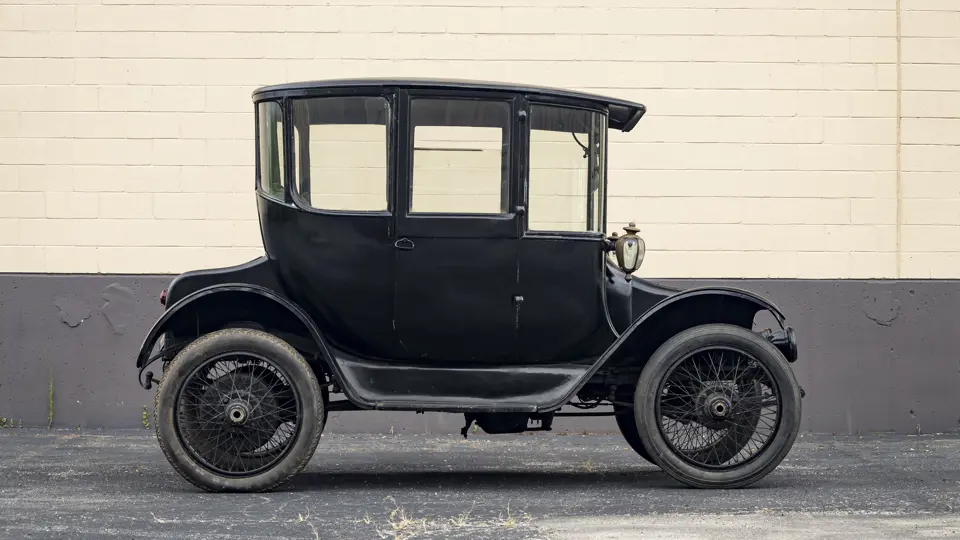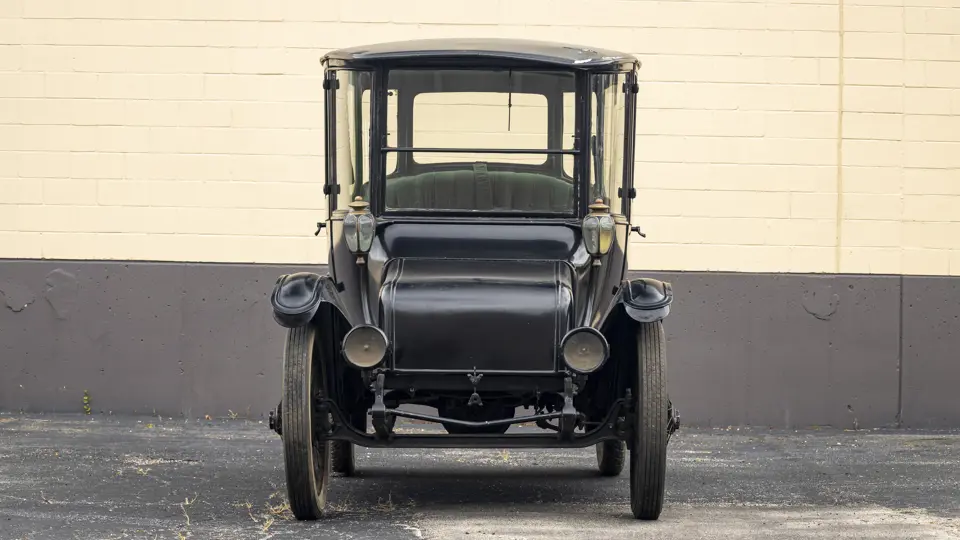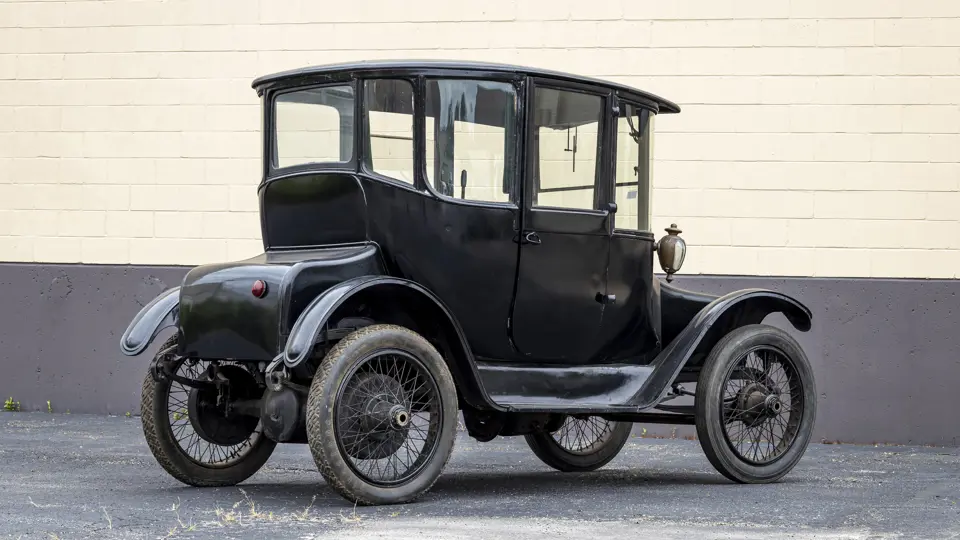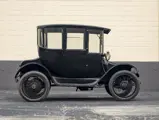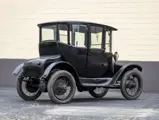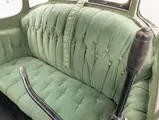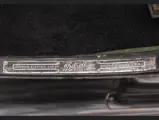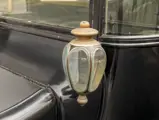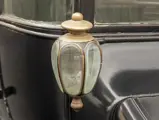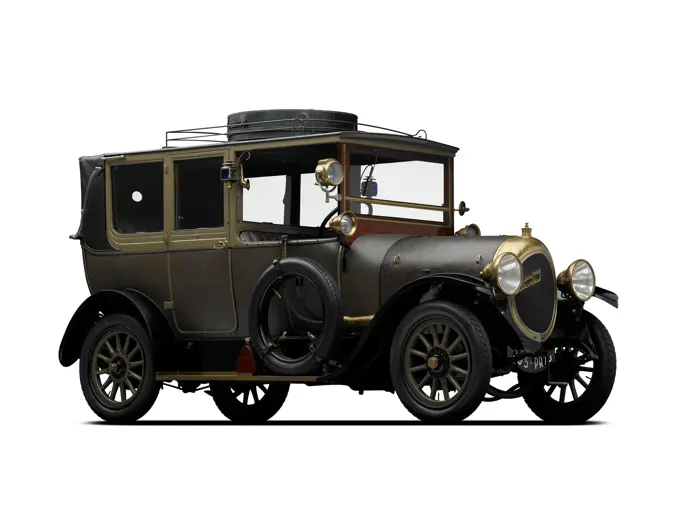
1918 Detroit Electric Model 74A 'Dual Control' Brougham
{{lr.item.text}}
$90,750 USD | Sold
{{bidding.lot.reserveStatusFormatted}}
- An elegant example of a pioneering American electric car
- Rare dual-control model, able to be driven from the front or rear seat
- Well-patinaed condition; ready for recommissioning
The Detroit Electric was, prior to recent years, the most successful American electric vehicle ever built. Anderson Electric Car Company and its corporate successors manufactured it from 1907 until 1937. For most of those 30 years, the product changed little: a car that was a genuine horseless carriage, with elegant but deeply conservative design, resembling a carriage that had lost its horse. The interiors were often beautifully trimmed, to evoke the parlor of a fine home, which was not a coincidence. Much of the market for electric vehicles was with wealthy women, who preferred them to the gasoline-and steam-powered automobiles that were widely considered smelly and difficult to operate. Indeed, that the Detroit Electric survived for so long was a credit to a customer base that, in many cases, had never driven any other type of automobile, and so remained faithful long after the design had become obsolete.
This Detroit Electric, a Model 74A, as noted on its original identification plate, is a rare dual-control model, with separate sets of steering and power controls allowing it to be driven from either the main seat or one of the front jump seats. This permitted the car to be piloted either by its owner, or by a chauffeur, which some of the wealthy proponents of these turn-of-the-century ‘EVs’ favored indeed. Today this configuration is quite scarce and considered highly desirable by Detroit collectors.
Refinished many decades ago, the Model 74A remains sound, with some wear and age to its finishes but appearing to be an overall solid example, with green velveteen upholstery in good and usable shape. While not presently in running condition and not presently fitted with batteries, it could likely be returned to that condition as a straightforward project that has been off the road for some time. This is an interesting specimen of a pioneering American electric car built by a company that was, until recently, by far the most successful US manufacturer of such vehicles. It has abundant charisma and would be an apt companion either to the gas- and steam-powered vehicles in one’s collection, or, as a local runabout, the partner to a Tesla in one’s home garage.




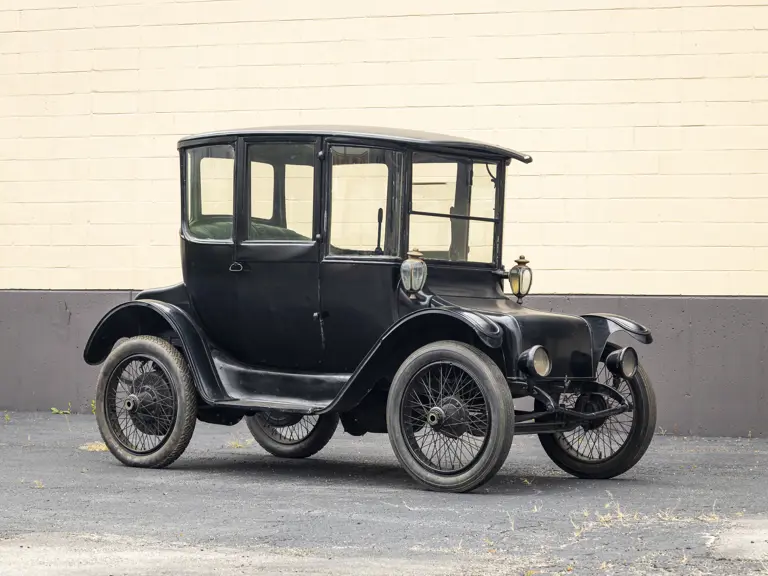
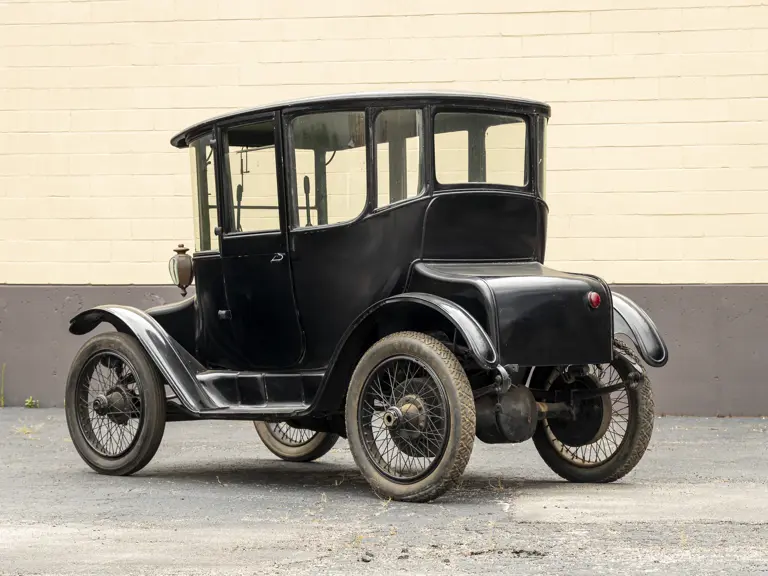
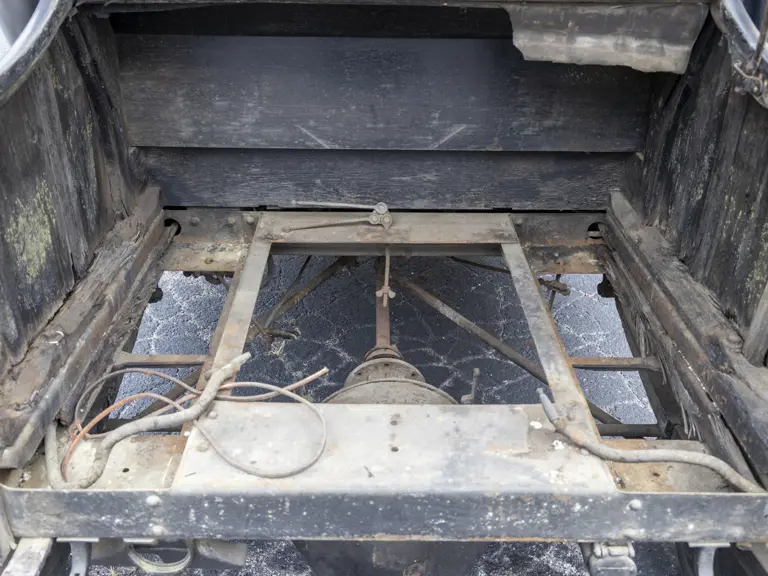
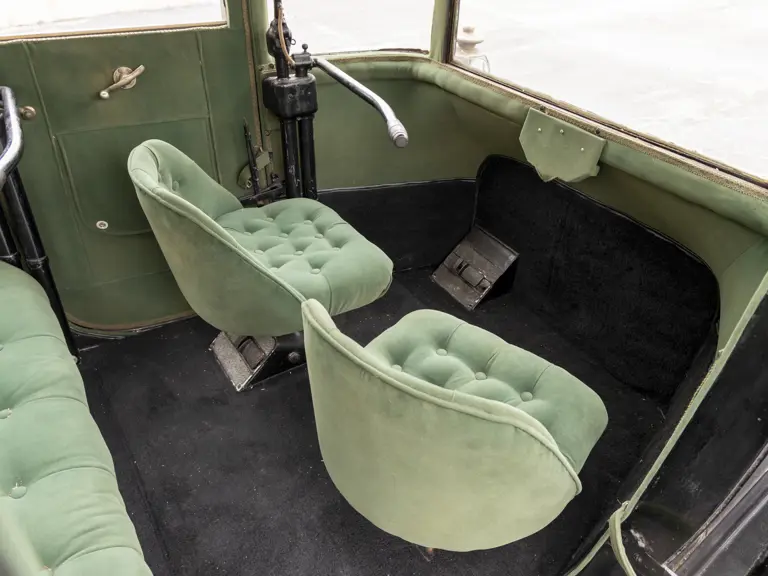

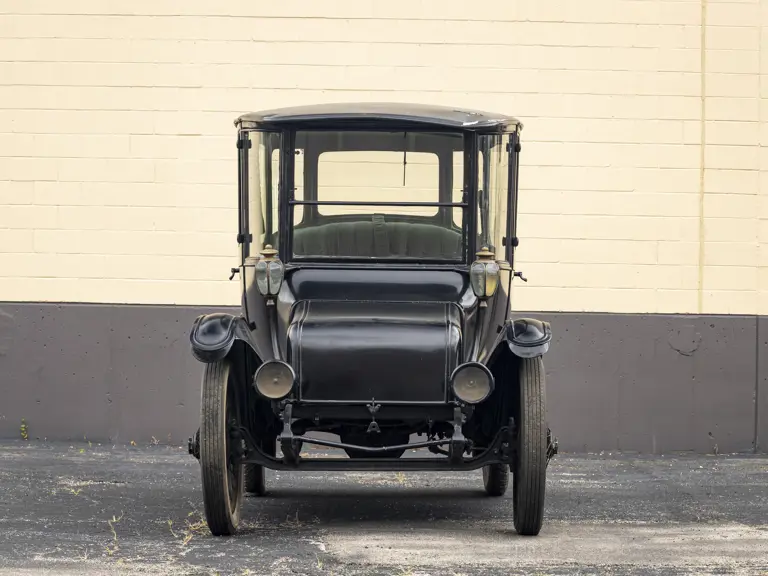

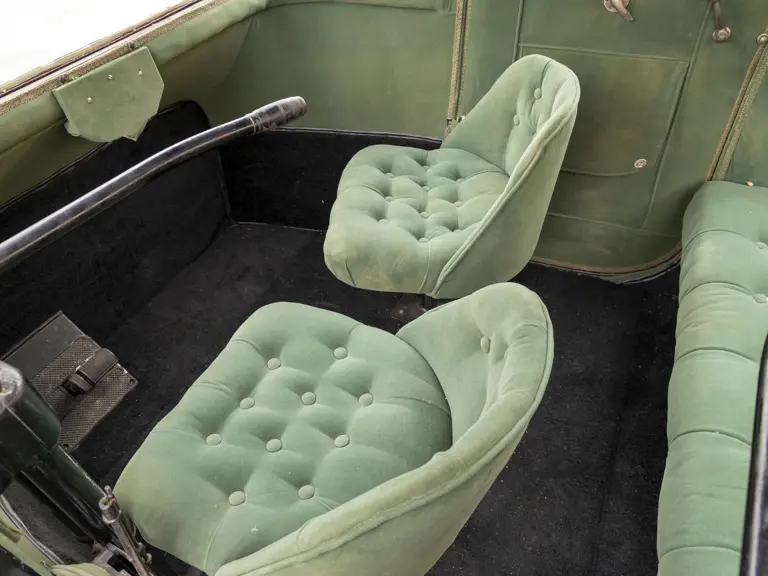
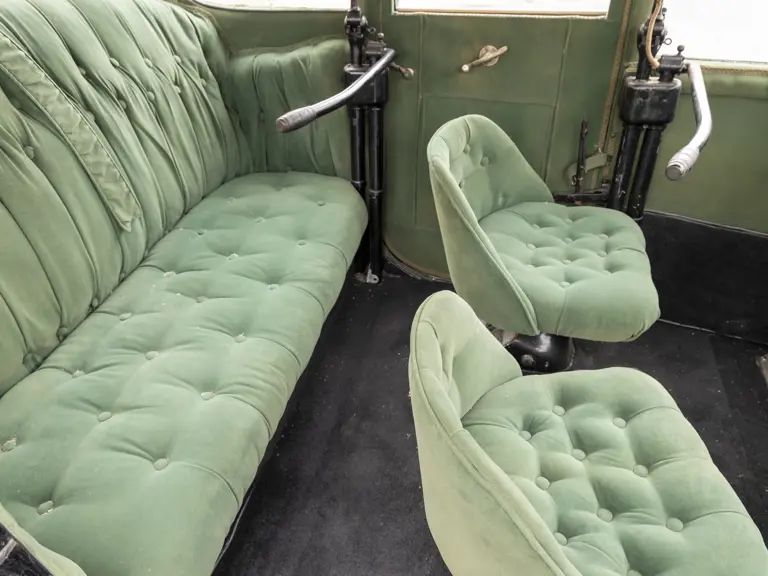
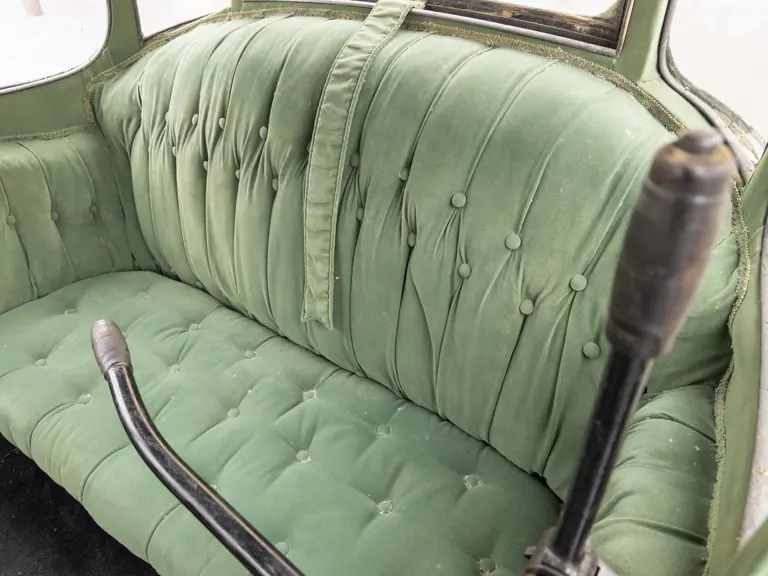
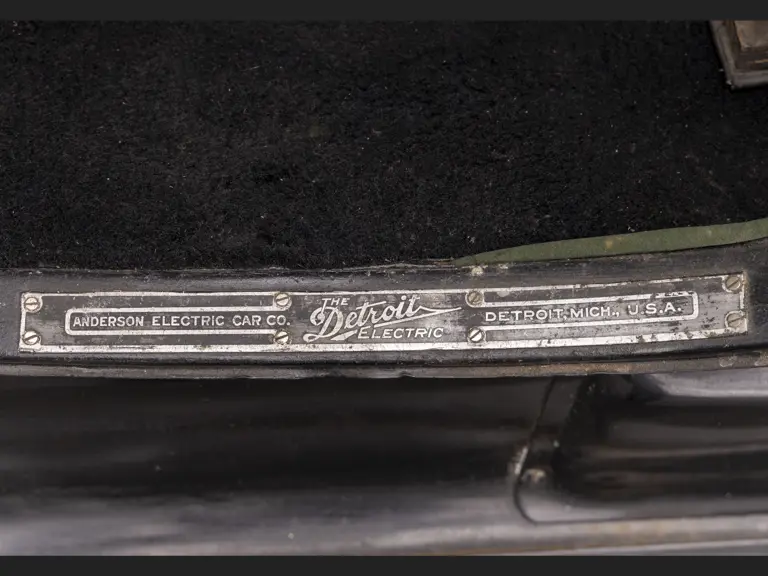
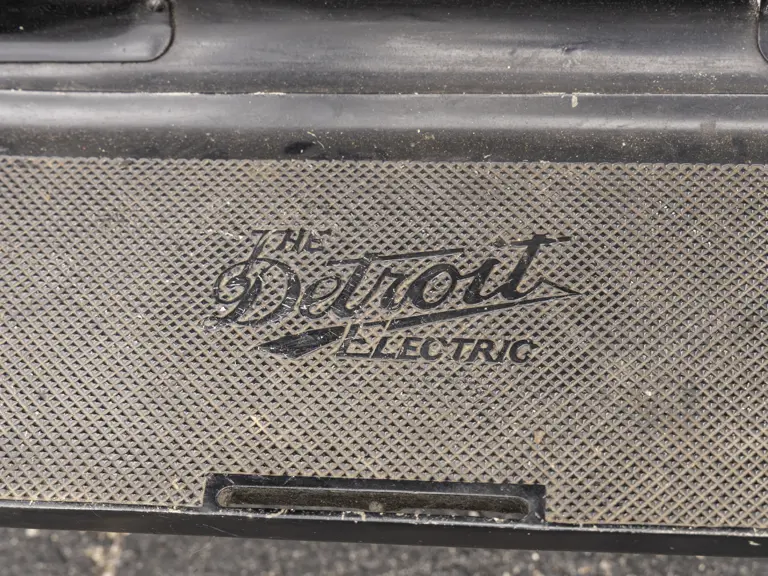
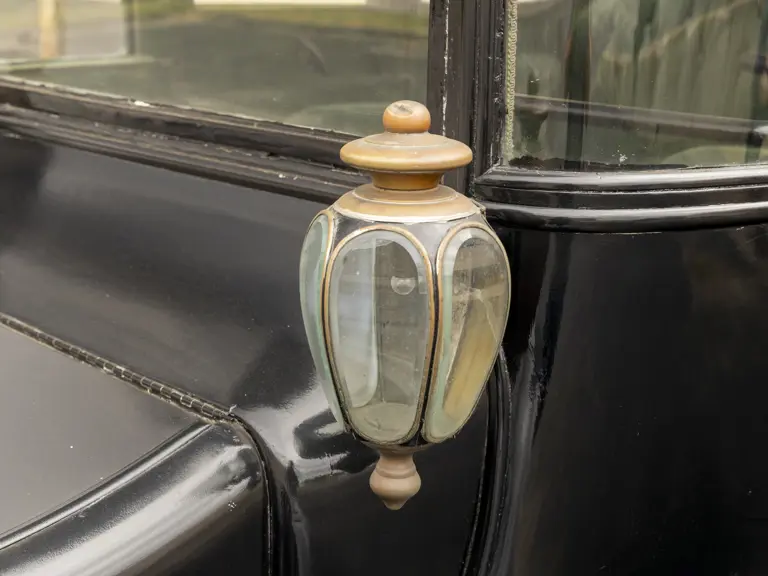
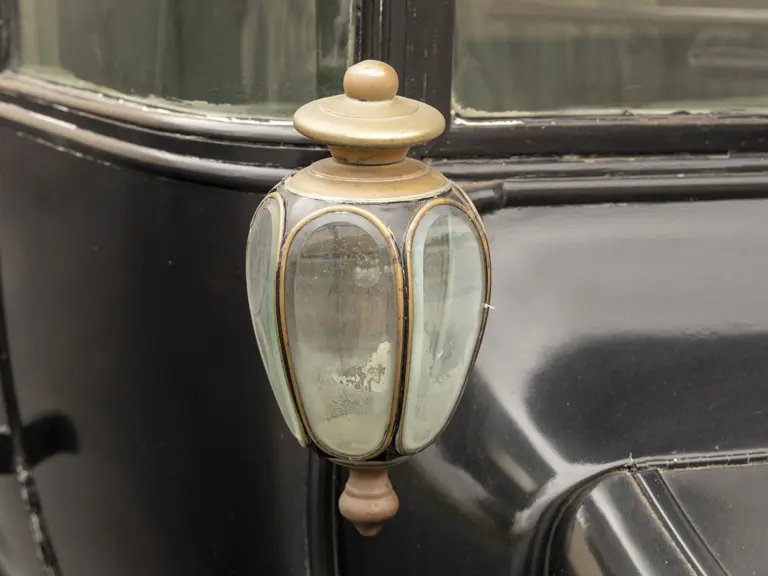

 | Hershey, Pennsylvania
| Hershey, Pennsylvania
